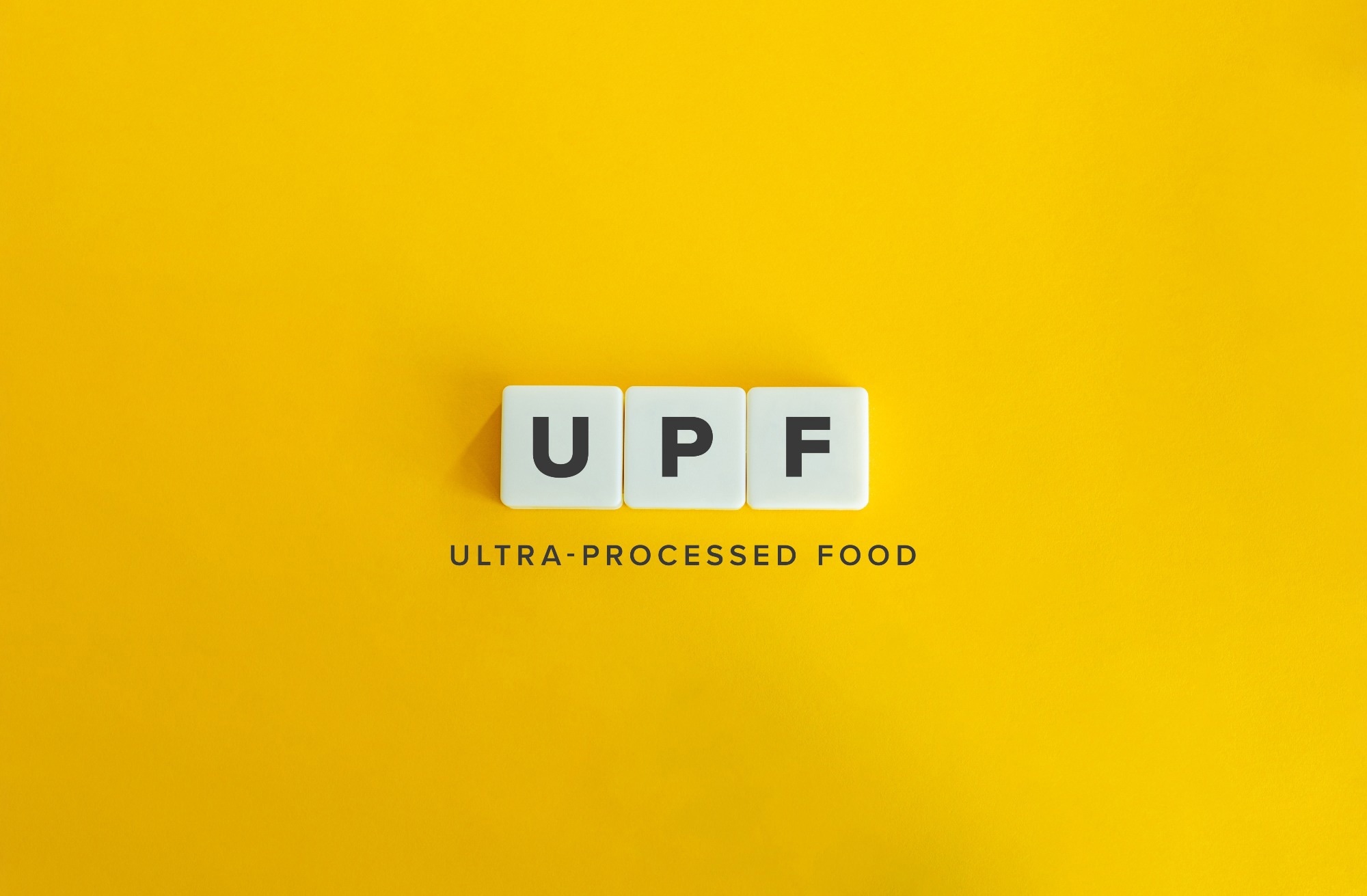
In an evolving health landscape, emerging research continues to highlight concerns that could impact everyday wellbeing. Here’s the key update you should know about:
A novel study aims to determine whether making UPFs more difficult to chew and slower to eat can reduce energy intake and improve metabolic outcomes, shedding light on how texture may influence overeating.
The Effect of Eating Rate of Ultra-Processed Foods on Dietary Intake, Eating Behaviour, Body Composition and Metabolic Responses—Rationale, Design and Outcomes of the Restructure Randomised Controlled Trial. Image Credit: designium / Shutterstock
In a recent article published in the journal Nutrition Bulletin, researchers in the Netherlands outlined a clinical trial called “Restructure,” designed to investigate how the eating rate (ER) of ultra-processed foods (UPFs) affects energy intake and metabolic health.
UPFs have been linked in epidemiological studies to higher energy intake, weight gain, and diet-related diseases. Their sensory properties, particularly texture, can influence how quickly they are eaten and how much is consumed. Soft, energy-dense foods that require little chewing are often consumed rapidly, which encourages higher intake. While debate continues over whether the harms of UPFs stem from their processing or their nutrient profiles, this study aims to isolate texture-induced eating rate as a possible mechanism.
About the study
The Restructure trial will test whether altering the texture of UPF meals, and thus their eating rate, can change daily energy intake. It is a single-blind, randomized, controlled, crossover study involving two 14-day diet phases separated by a 14-day washout. One diet features slowly eaten, hard-textured UPFs (97% Nova category 4 by energy), while the other uses soft-textured UPFs consumed more quickly (94% Nova category 4). Each participant will complete both diets in random order, with the washout period intended to minimize carryover effects on the microbiome, body composition, and metabolic outcomes.
Participants will be healthy adults aged 21–50 years with a BMI of 21–27 kg/m², normal appetite, and a habitual UPF intake of no more than half of their total energy. Those with restrictive diets, food allergies, high alcohol intake, smoking habits, extreme physical activity, recent major weight change, or any metabolic, gastrointestinal, or eating disorders will be excluded.
Baseline assessments will include a UPF food frequency questionnaire, a “carrot test” to gauge natural eating rate, and a set of psychometric tools to profile eating behaviors. Participants will then complete two tightly controlled diet phases. They will consume three meals a day on-site during weekdays, while standardized meals for weekends will be prepared for consumption at home. Participants will photograph meals before and after eating, return leftovers for weighing, and receive snacks after meals. Seven unique menus will be presented twice during each phase of the diet.
The diets will be matched for portion size, visual volume, familiarity, and liking, but differ in texture and macronutrient composition. The slower-eating diet will offer chewier, harder foods and provide 21% of energy from protein, 53% from carbohydrate, and 22% from fat. The faster-eating diet will consist of softer, more lubricated foods and provide 16% protein, 47% carbohydrates, and 33% fat.
Measurements and outcomes
Energy intake will be measured at every meal, while body composition will be assessed using dual-energy x-ray absorptiometry at baseline (T1), after the first diet (T2), during washout (T3), and after the second diet (T4). Metabolic responses will be evaluated at T1, T2, and T4. Physical activity will be tracked using wearable devices and questionnaires. Participants will undergo a mixed meal tolerance test at the same time points, using a standardized UPF meal consisting of rice porridge and chocolate milk.
Eating behavior will be analyzed from video recordings coded for bites, chews, and swallows, with eating rate calculated from meal duration. On weekends, meal duration will be recorded via an online appetite questionnaire. Blood samples collected at T1, T2, and T4 will be analyzed for inflammatory cytokines (including IL-6, TNF-α, and hsCRP), gut permeability markers (e.g., zonulin and LBP), and appetite hormones (such as GLP-1, ghrelin, and PYY). Participants will also wear continuous glucose monitors and provide weekly stool samples for microbiome and metabolite profiling using shotgun metagenomic sequencing and targeted metabolomics.
Energy and nutrient intakes will be calculated from food weights and packaging data. A repeated measures mixed model will compare daily average energy intake between the two diets, using both per-protocol and intention-to-treat analyses. The trial is powered to detect differences in energy intake but not secondary outcomes, and the statistical plan has been pre-registered on clinicaltrials.gov (NCT05996874).
To preserve blinding, participants are told the study focuses on “protein sources and body composition” and will be debriefed on its true purpose afterward. The order of the two diet phases will be randomized using sealed envelopes.
Conclusions
This study will investigate whether slowing the eating rate of UPFs through texture modifications can reduce energy intake, regardless of the level of processing in the foods. Understanding how sensory properties shape eating behavior could help design strategies to reduce excess energy intake and its related health risks.
Secondary analyses will also explore how these dietary patterns affect metabolic health and body composition. However, the researchers note limitations including the semi-residential design’s lower ecological validity, the different macronutrient profiles of the two diets, and the focus on a narrow, healthy population.
Journal reference:
- Lasschuijt MP, Heuven LAJ, van Bruinessen M, et al. (2025). The Effect of Eating Rate of Ultra-Processed Foods on Dietary Intake, Eating Behaviour, Body Composition and Metabolic Responses, Rationale, Design and Outcomes of the Restructure Randomised Controlled Trial. Nutrition Bulletin, 1-16. DOI: 10.1111/nbu.70027, https://onlinelibrary.wiley.com/doi/10.1111/nbu.70027

